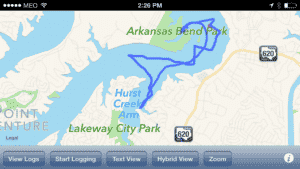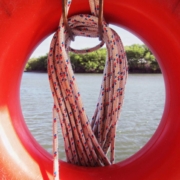Entering Experience into your sailors logbook
Airline pilots, naval seamen, scientists and scuba divers all maintain a logbook. So why don’t sailors? Because it’s just in the too hard bucket with seemingly no point to do it. Until Now! If you ever want to charter, you MUST have a sailing resume. Yacht charter companies DO NOT accept a sailing certification – they will always ask for a resume which requires you to list your experience and theory courses. The NauticEd Logbook is your simple way of storing it in the cloud for all time. Accurate and up to date! AND you can only gain Rank with NauticEd when you list your experience – it’s why every yacht charter company in the world accepts our resume/certification because they both go hand in hand. To gain the Bareboat Charter Master Rank Certification you simply must have listed an acceptable amount of experience which guarantees acceptance by the charter company. i.e. 50 qualifying days on the water with the NauticEd Bareboat Bundle of courses completed is yacht charter company acceptable.
HOW TO START MAKING ENTRIES INTO YOUR ELECTRONIC SAILOR’S LOGBOOK
At first thought, you might think that entering all your sailing history is too daunting of a task. But it’s not – we’ve made the interface easy and very quick. The big thing is that your last entry is remembered and so you can literally make DOZENS of entries in a few minutes. Additionally, you don’t have to enter all of the information if you don’t want or can’t remember.
Here is how to get 100 entries done in about 20 minutes.
VESSELS: First, set up your favorite vessels. Just click on the vessel tab and set up your boats that you often sail on. Also, enter some Generic type boats like “Generic 45 ft Sailing Catamaran” or “Generic 35 ft Sailing Monohull”. This is so that you don’t have to create a new boat if you just go on it once. You will notice we have set up a few Generic vessels already for you. You set up vessels so that the software can categorize and summarize your type of experience. NOTE that only fields with an asterisk (*) is a required field.
ADD LOGBOOK ENTRY: Next, start adding experience. But start with now and work backward in time. Think about your most recent years first. How many times have you been sailing this year, then last year and then the year before? Did you go mostly in the summer and some in the fall, spring winter? Let’s say 5 so far this year – 6 last year (or so) – and maybe a bit more often the year before – 10 – say. Maybe half in the spring, half in the summer, and a 2-3 in the winter. Something like that. NOTE that only fields with an asterisk (*) is a required field.
Next, just make about that many entries each year – something that resembles somewhat accuracy as sort of best you maybe can. Pick dates that would be sort of reasonably close. e.g. if you went sailing say 5 times in the first 2 quarters of the year then pick a day in January, 2 in February, 1 in April, and 2 in May. Something like that!
You’ll notice that when making a second entry, that the last entry you made is already queued up and all you have to do is change the date slightly. You don’t need to add the non-asterix stuff – just the date, the vessel, and if you were Master or crew. In this manner, you can do about 6-10 entries per minute. Now go back to last year and repeat – then the year before. Keep going until you have enough entries that realistically reflect your recent 3-4-5 years of experience. This will take about 20 minutes. If you want to go all out, go for it, invest another 20 minutes. Usually, you would not want to go past 15 years in the past. There is a diminishing return of the value of very old experience in the eyes of a yacht charter company when reviewing a sailing resume.
MULTIDAY ENTRIES: If you have a few 7-day charters then try to remember the month that you did it in and then click the multiday checkbox. Note that it asks for nights that you actually sailed through the night. So click zero if you were at anchor.
You can (not required) also click on the Other Experience Tab. This allows you to enter in other types of experience that charter companies like to see. None of it is mandatory but just remember that you are building your sailing resume here – in much the same way you build a job resume (yuk) except this one is fun and brings back good memories.
This 20-minute exercise will bring you up to date.
See this video: How to make a logbook entry into your FREE NauticEd Online Sailor’s Logbook. Note that this video was done before we added the multi-day function.
The NauticEd logbook is maintained for you for free in the cloud and is always accessible by you and anyone you specifically designate with permissions. Additionally, it is easy to edit and update. You can do this either online or via our iOS NauticEd App. In the App you can make an instant entry when you get off the boat at the end of the day.
Another important feature of an experience logbook is authentication. We created a CrewMate Authentication (TM) system whereby your logbook entries get reported as authenticated. Read about CrewMate Authentication here. So you want to be setting up CrewMates in your logbook area so that your CrewMates can auto-authenticate your entries as you make them (optional but it gives credibility to your logbook).
You can also add to your logbook automatically using our partnership GPS tracking App called SailTies. SailTies will record and store your daily tracks for you. At the end of the outing, the track is uploaded to your logbook and you can see your tracks at any time in the future. Plus the track stores your miles for you AND this also creates an authenticated entry into your logbook. AND if you add a crewmate to the entry, your crewmate can also see the track forever after.

GPS Sailing Track entered into your logbook.
Oh and another REALLY cool feature. Anytime you book a charter with NauticEd sailing vacations, the logbook entry is made automatically for you AND the weeklong charter entry is authenticated by NauticEd giving your resume ultra credibility. Super cool.





